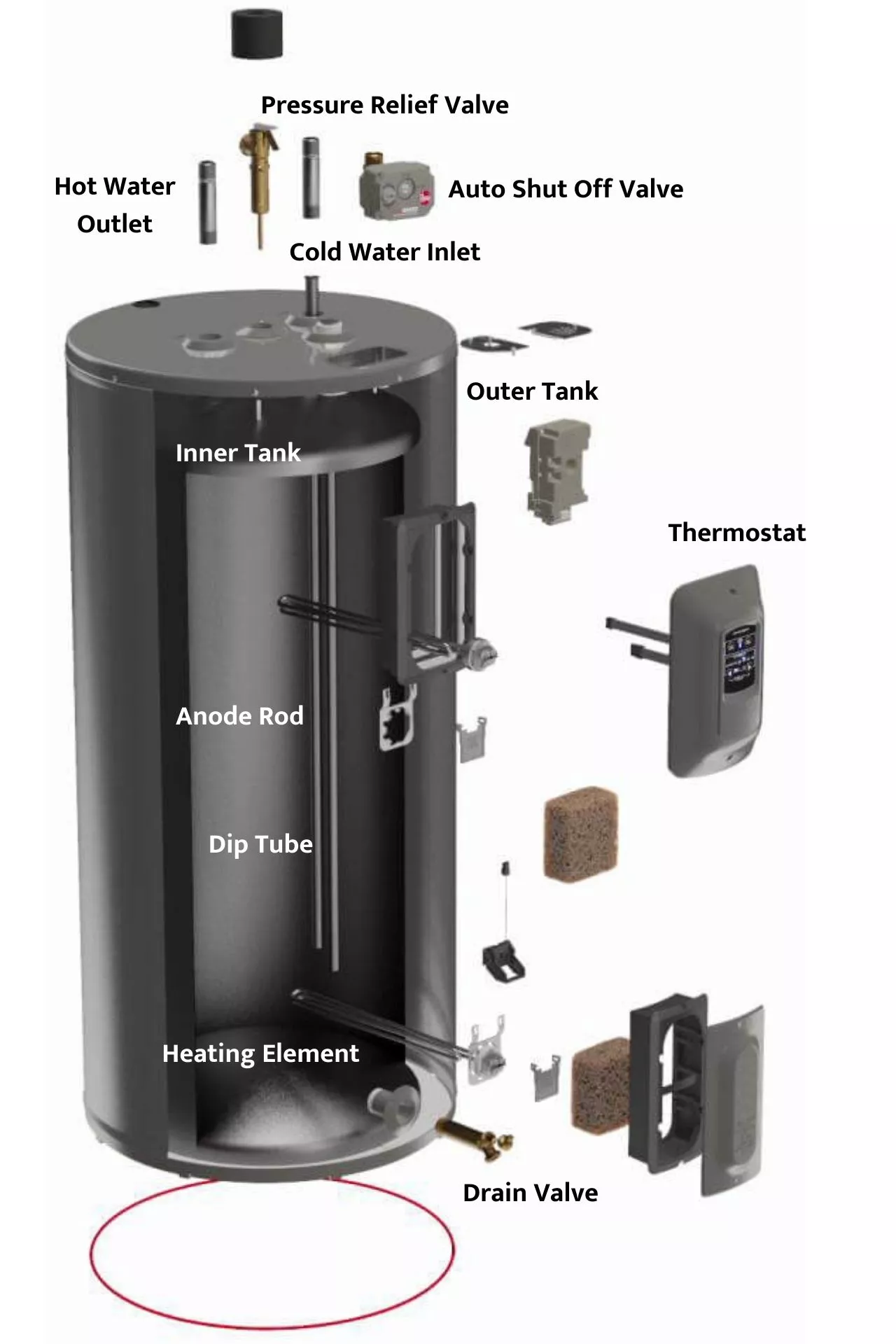No, you should not transport a water heater on its side. Doing so can damage internal components and lead to leaks.
Transporting a water heater requires careful handling to ensure it remains intact. Most water heaters are designed to stand upright during transport. Laying them on their side can cause parts to shift and potentially break. This could lead to costly repairs or replacement.
Proper transport methods protect the appliance and ensure it functions correctly after installation. If you need to move a water heater, use appropriate equipment and consider professional help. Understanding the correct transport method can save you time, money, and hassle in the long run. Always prioritize safety and equipment integrity during the moving process.
Page Contents
- 1 Transporting Water Heaters: Basic Considerations
- 2 Potential Risks Of Horizontal Positioning
- 3 Manufacturer Warnings And Warranty Concerns
- 4 Securing The Water Heater For Transit
- 5 Loading And Unloading Best Practices
- 6 Road Considerations And Transit Duration
- 7 Post-transport Inspection And Installation
- 8 Alternative Transport Solutions
- 9 Conclusion
Transporting Water Heaters: Basic Considerations
Transporting water heaters safely is very important. Suitable vehicles include trucks or vans with enough space. Always secure the heater to prevent movement during transport.
Pre-transport preparation steps include:
- Turn off the water and power supply.
- Drain all the water from the heater.
- Disconnect any pipes or wires carefully.
- Wrap the heater to protect it from scratches.
Taking these steps ensures safe transport and prevents damage. Remember, lifting the heater correctly is essential to avoid injury.

Credit: diy.stackexchange.com
Potential Risks Of Horizontal Positioning
Transporting a water heater on its side can cause internal component damage. The tank can shift, leading to broken parts inside. Heating elements and thermostats may be affected by this movement.
Another risk involves leaks and seals compromise. Water heaters have seals that keep water inside. Laying the heater sideways can put pressure on these seals. If they break, water may leak out, causing a mess.
Always consider these risks before transporting a water heater sideways. Keeping it upright helps protect its integrity and functionality.
Manufacturer Warnings And Warranty Concerns
Many manufacturers warn against transporting a water heater on its side. Risk of damage increases when it is laid flat. Always check the guidelines provided by the manufacturer.
Transporting a water heater incorrectly can lead to warranty issues. If a water heater is damaged during transport, the warranty might become void. Following the manufacturer’s instructions is essential to maintain coverage.
| Manufacturer Guidelines | Impact on Warranty |
|---|---|
| Do not transport on its side. | May void warranty if damaged. |
| Always keep upright. | Coverage remains valid with proper transport. |
| Check for specific instructions. | Failure to comply can lead to issues. |
Securing The Water Heater For Transit
Securing a water heater for transit is very important. Proper cushioning materials help protect it from damage. Use blankets or foam to wrap the heater. This keeps it safe during movement.
Tying down techniques are also essential. Use strong straps or ropes to secure the heater. Make sure it is tightly fastened to prevent shifting. Place it in an upright position whenever possible. If transporting on its side, ensure it is well-cushioned and tied down securely.
Loading And Unloading Best Practices
Loading and unloading a water heater requires careful attention to safety. Always use proper lifting techniques. Bend your knees and keep your back straight. This helps prevent injuries while lifting.
To avoid tipping, secure the water heater in an upright position. Use ropes or straps to hold it in place. If transporting on its side, ensure it is stable and cushioned.
Vibration can cause damage during transport. Use blankets or foam padding to protect the heater. Ensure that it is well-secured in the vehicle.
Keep the surrounding area clear. This minimizes accidents during the loading and unloading process. Always work with a partner for added safety.

Credit: diy.stackexchange.com
Road Considerations And Transit Duration
Planning the route for transporting a water heater is very important. Choose a path with minimal bumps and potholes. Avoid roads with heavy traffic. Check for low bridges and tight turns. This will help keep the heater safe.
The duration of the trip also matters. Longer transit times can increase the risk of damage. Secure the water heater properly during transport. Use padding and straps to prevent movement. Take frequent breaks to check the load.
Post-transport Inspection And Installation
Check for any visible damages on the water heater after transport. Look for dents, scratches, or any signs of leaks. If you notice any issues, contact a professional.
Follow these installation recommendations for best results:
- Always keep the water heater upright during installation.
- Ensure proper ventilation for gas water heaters.
- Connect water lines securely to prevent leaks.
- Verify that the power supply matches the water heater’s requirements.
- Consider hiring a professional installer for safety and efficiency.

Credit: phyxter.ai
Alternative Transport Solutions
Using professional moving services is a great option for transporting a water heater. Trained experts know how to handle heavy items safely. They can ensure that the heater stays in good condition during transport.
Renting the right equipment is also important. A moving truck with proper support can prevent damage. Dollies or straps can help secure the water heater in place. Make sure to choose a truck that fits the size of the heater.
| Service | Benefits |
|---|---|
| Professional Movers | Expert handling, safety, and insurance options |
| Rental Trucks | Space for large items and easy transport |
| Dollies/Straps | Secure transport and reduced risk of damage |
Conclusion
Transporting a water heater on its side can lead to damage and leaks. It’s best to keep it upright during transportation. If you must lay it down, ensure it’s properly secured and supported. Always consult the manufacturer’s guidelines for specific instructions.
Safe transport will extend the life of your water heater.
